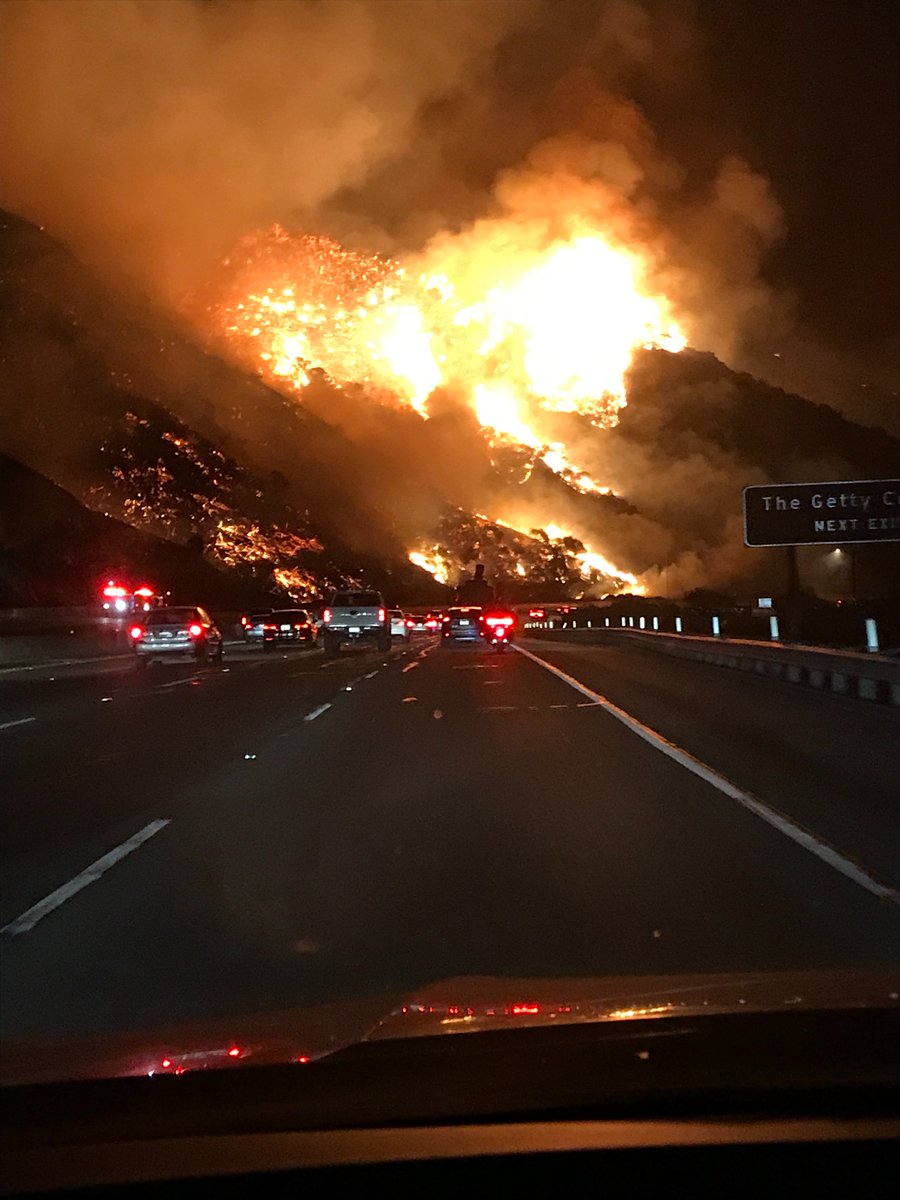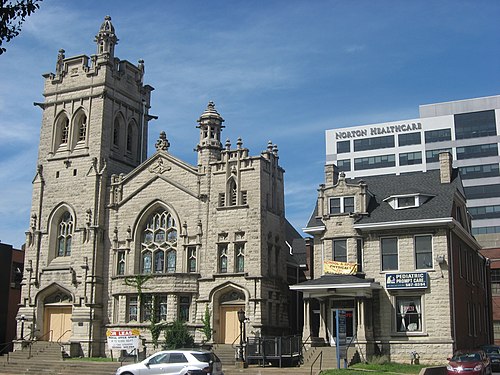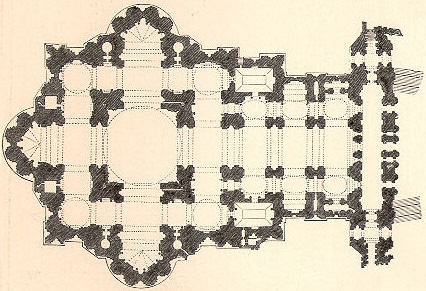Vegetation Fires and Cultural Heritage: the Getty Museum Case
On December 5th, 2017, a large brush fire in California has forced the evacuation of tens of thousands of people and destroyed hundreds of homes and other buildings. According the media no injuries or structural damage have been reported, although the museum has been threatened and closed to the public on Wednesday 5th.

An important aspect of the fire that obliged Authorities to close the freeway through the Sepulveda Pass, is related to fire safety of art collections and museums in general in case of vegetation or forest fire. The Getty Center has been closed for one day because of wildfires burning across the 405 Freeway. According media “officials say the flames pose no immediate danger to the museum’s art”.
At 07:11 – 6 dic 2017 the Center has released the following tweet: The Getty Center is closed to the public today. The fire is northeast of the Getty Center and east of the San Diego Freeway. Air filtration systems are protecting the galleries from smoke. We continue to monitor the situation and will issue updates as we have them.
The Getty’s vice president of communications, has explained that “the safest place for the art is right here at the Getty”.
The key points fo the specific fire safety strategy adopted by the museum against vegetation fire can be summarised as follows:
- Strategic Location. The Getty Center is located on a hill 300 meters above sea level, in a relatively isolated area, making it more difficult for flames to reach it in the event of a wildfire. This elevated location also allows for better visibility to monitor potential fire hazards.
- Structural measures. Thickness of the walls and doors, designed to compartmentalize any flames, travertine stones ()which has fire-resistant characteristics) on major external walls and fire resistant crushed stone on flat roofs.
- Smoke and Flame Detection Systems. The Getty Center is equipped with *smoke and heat sensors* inside and outside the building that can detect flames before they cause significant damage.
- Environmental Monitoring Network. The institute continuously monitors the surrounding environmental conditions, particularly air quality and wind speed, to predict nearby fires. The use of drones and other technologies also allows monitoring of the surrounding area.
- Fire Protection Systems for Artworks:
- inside its buildings, the Getty Center is equipped with high-precision sprinkler systems, which are designed to limit damage to art in the event of a fire. These systems are designed to not damage art with too much water, but to quickly put out fires,
- protective Containers and Fireproof Archives: The most delicate and vulnerable works are stored in spaces with advanced protection systems, such as fireproof cabinets and temperature-controlled containers, that can withstand sudden flames,
- sophisticated air filtration system and pressurization systems (with the possibility of reverse flow);
- Water reservoir to supply suppression systems.
- On-site helipad to fill helicopters with water.
- Large-diameter loop to feed hydrants of the property.
- Physical Barriers and Protective Measures. The Getty Center has invested in:
- “defense zones“ around its property, which include areas where vegetation is reduced or replaced with fire-resistant plants. These zones help slow or divert the advance of a wildfire.
- Fire Trenches: Creating fire trenches along the property boundaries prevents fires from easily spreading toward the center
- the zone around the building is kept green with fire-resistant plants
- the area surrounding the campus is kept clear of grasses
- a canopy of oak trees has been planted in order to suppress the growth of vegetation that could feed a vegetation fire
- acacia shrubs (rich of water and fire resistant) planted close to the building and on the nearby slopes.
- Emergency Planning and Preparedness.
- Evacuation Plans: The Getty has developed detailed evacuation plans for both staff and visitors. Every staff member is trained to handle emergency situations, and regular evacuation drills are conducted to ensure everyone knows what to do in the event of a fire.
- Communication Systems: The museum is equipped with an emergency communication system, which allows staff to send instant alerts to visitors and employees in the event of imminent danger.

- Collaboration with Local Authorities. Coordination with Fire Departments: The Getty Center maintains close collaboration with local fire departments and other emergency agencies to ensure rapid response in the event of a fire. The museum also integrates into city emergency plans to manage fire risk in a coordinated manner.
- Technology and Preparedness for Major Events. Emergency Command Center: The Getty has an operational command center that is ready to handle large-scale emergencies, such as a large forest fire nearby. This center allows for real-time monitoring of the situation and coordination of all resources needed to protect the museum.
- Public Communication and Education. The Getty also promotes awareness of fire risk among its visitors and the public. Safety education, including information on how to respond in the event of a fire, is part of its outreach efforts.
Smoke, hot air and toxic gases produced by a forest or vegetation fire con be led by winds inside containing vulnerable historic or cultural artefacts and damage them inside a building, the same way smoke and combustion products can do it when produced by an internal fire.
The December 2017 fire has highlighted the need, often forgotten (not in the case of the Getty Museum), to also evaluate the risk of external fire when assessing the safety of museums and cultural heritage.





